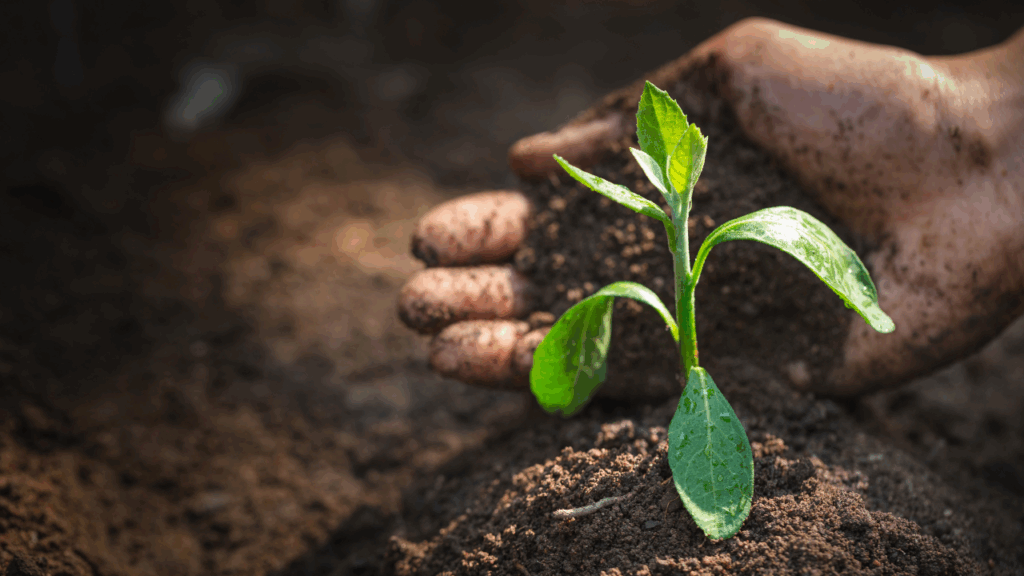In the world of professional landscaping, particularly here in New York City, where every inch of soil has a history, the focus should not stop at plant selection, irrigation plans, or visual design, but what lies beneath. The true engine of any thriving landscape lies underground. Soil is not an inert substrate; it is a living, dynamic network of bacteria, fungi, protozoa, nematodes, and organic matter. This biological engine is what determines whether your landscape survives, thrives, or slowly dies despite appearances. For professional landscapers and ecological designers, thinking like a microbiologist is the need of the hour.
What Healthy Soil Actually Is
Healthy soil is not simply “nutrient-rich.” That’s a chemical shortcut. Truly vital soil has:
- Structural porosity to allow water infiltration and root expansion
- Organic matter that acts as a sponge and nutrient bank
- Microbial life that unlocks nutrients, suppresses disease, and builds soil structure
In other words, it’s not what you put into the soil that matters most, but what’s already living within it.
Fungal-Dominant vs. Bacterial-Dominant Soils
All soils exist on a biological spectrum. Two key lifeforms lead the show:
- Bacterial-dominant soils are high in nitrogen cycling, making them great for annuals, turf, and weedy species. These soils thrive on disturbance and quick returns.
- Fungal-dominant soils are better suited to perennials, shrubs, and trees. They retain nutrients over longer periods and form complex symbioses (like mycorrhizal networks) that sustain mature ecosystems.
A forest does not grow in lawn soil, and vice versa. Understanding this spectrum can radically shift your planting strategy.
Soil Before Species: Let Biology Lead Design
The classic approach is to pick plants and then amend the soil to fit. But what if we flipped that? What if your soil told you which plants it was ready to host?
- On a fungal-dominant woodland edge: Install a native understory of Carex, Heuchera, and Amelanchier.
- On a bacterial lawn remnant: Stick with sun-loving pioneer species or convert over time using fungal mulches.
This is not a restriction. It’s an invitation to work with the land’s existing intelligence.
Mulch as a Microbial Strategy
Mulching is often treated as a cosmetic or moisture-retention step. But mulch is microbial food. Wood chips encourage fungal life. Leaf litter introduces diversity. Straw supports bacteria.
Different mulches cultivate different microbial allies. Choose accordingly:
- Wood chips: Use under trees, shrubs, and native woodland plantings
- Compost: Apply as a thin layer to boost microbial diversity and nutrient cycling
- Leaf litter: Ideal for building fungal webs in shaded, low-traffic zones
Irrigation and Soil Life: A Hidden Trade-off
Overwatering doesn’t just waste water, it also disrupts the oxygen balance microbes depend on. Anaerobic soil kills fungal networks and invites pathogens.
Best practices:
- Drip irrigation allows microbes and roots to share the zone of moisture
- Deep, infrequent watering mimics natural rainfall and supports root exploration
- Avoid “constant damp” systems, which collapse microbial variety
Eco Brooklyn’s View: Design from the Soil Up
At Eco Brooklyn, we often say that the most important part of a garden is the part you don’t see. We begin every green wall, water feature, and landscape with a soil audit. Sometimes as simple as a squeeze test, sometimes lab-analyzed for microbial diversity.
This has led us to:
- Create custom fungal composts for tree plantings in compacted urban soils
- Use biochar as a structural medium in vertical wall substrates
- Transition clients away from chemical fertilizers by restoring microbial function
Healthy soil creates self-sustaining landscapes. That means less irrigation, less intervention, and fewer pest problems. It also means deeper resilience to climate stress.
Think Beyond Plants for Landscaping in NYC
The best landscapers of the future will be part biologist, part designer. They’ll read the soil before reading a nursery catalog. They’ll see microbial life not as trivia, but as infrastructure.
Soil isn’t a medium. It’s the main ingredient.
And the more you know about it, the less you’ll need to fix later.
For well-thought, well-structured landscaping in NYC, contact Eco Brooklyn today!

